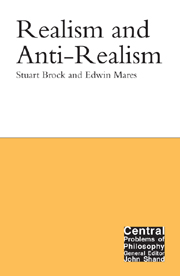10 - Mathematics
from Part II
Summary
Introduction
This chapter is slightly more technical than the others. This is required by the subject matter. We try as much as possible either to avoid technical notions or to restrict discussion of them to footnotes. The material presented here is appropriate for readers who have studied a little logic or even those who remember at least some of the mathematics that they learnt in school.
A mathematical statement is a statement such as “2 + 2 = 4” or “the square root of two is not a fraction”. What makes these statements true? And what makes other mathematical statements false, such as “2 + 2 = 5” and “the square root of two is a fraction”? Realism about mathematics claims that there are mathematical objects, such as numbers, that have mind-independent properties that make these statements true or false. Thus, for example, realists claim that there is something that is the number two that has the property that it is half of the number four. One might think that it is obvious that there are numbers: that we produce numbers by writing them. But realists think that in addition to numerals that we write there are numbers that are not created by human beings.
A mathematical theory is a set of statements about a putative class of mathematical objects. Thus, for example, arithmetic is a theory about the natural numbers, 0, 1, 2, 3, …. One way of viewing the realist debate in mathematics is to think in terms of mathematical theories.
- Type
- Chapter
- Information
- Realism and Anti-Realism , pp. 150 - 173Publisher: Acumen PublishingPrint publication year: 2007

